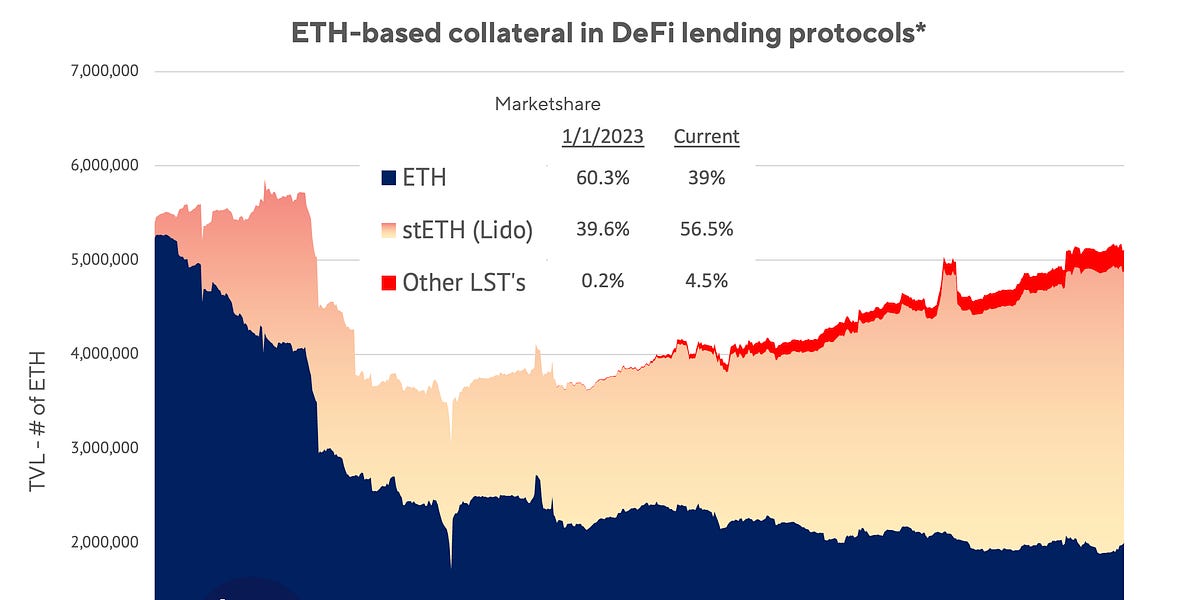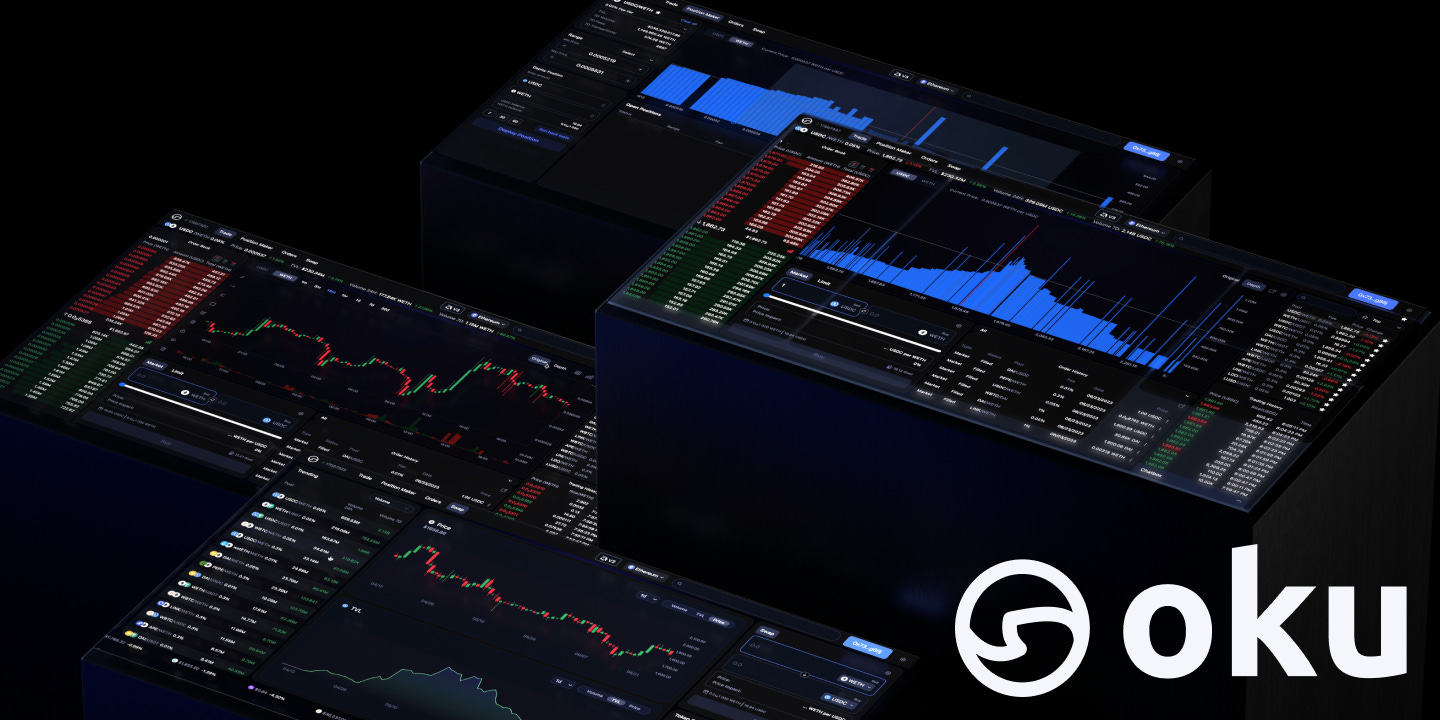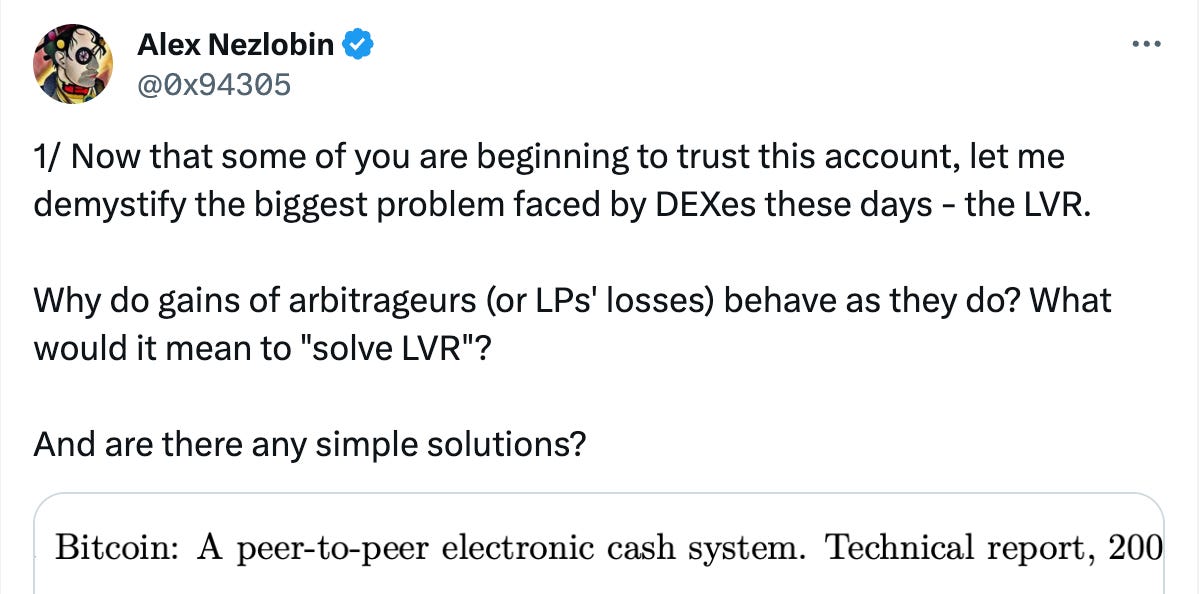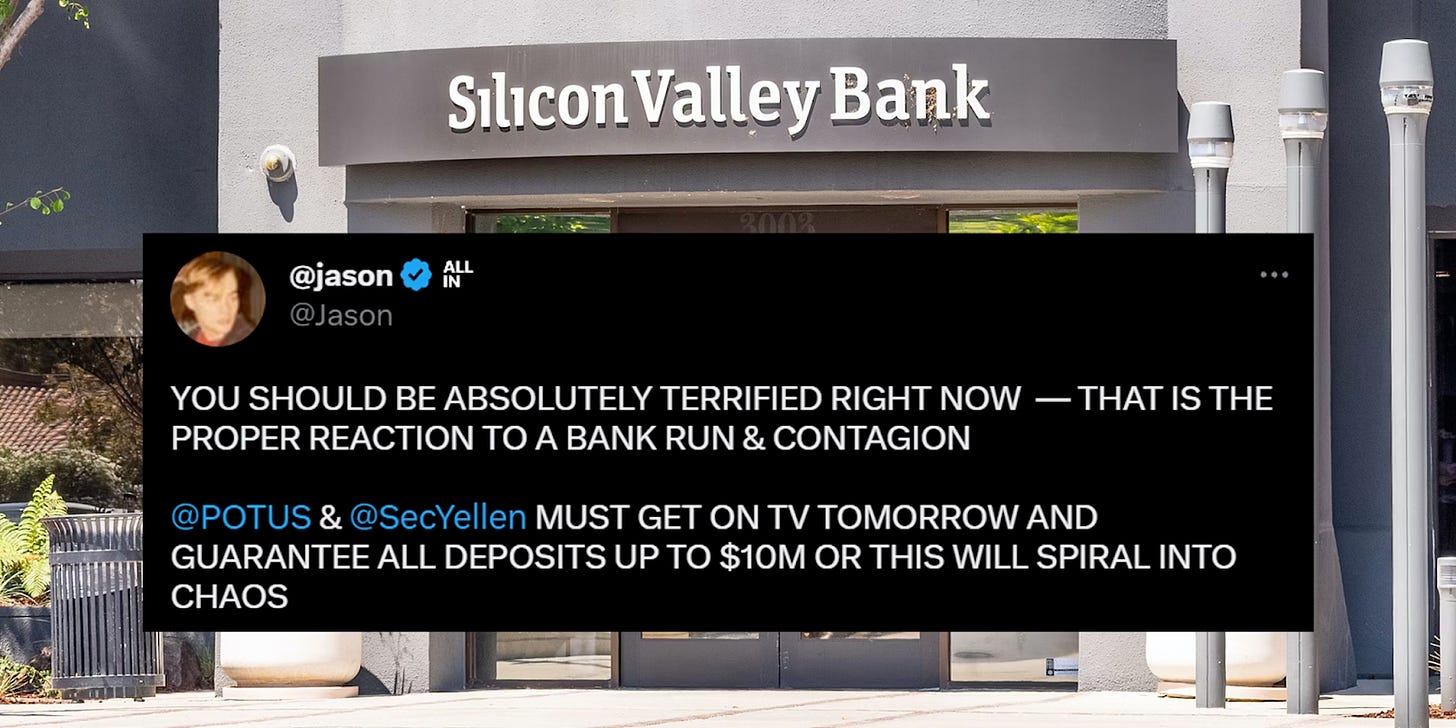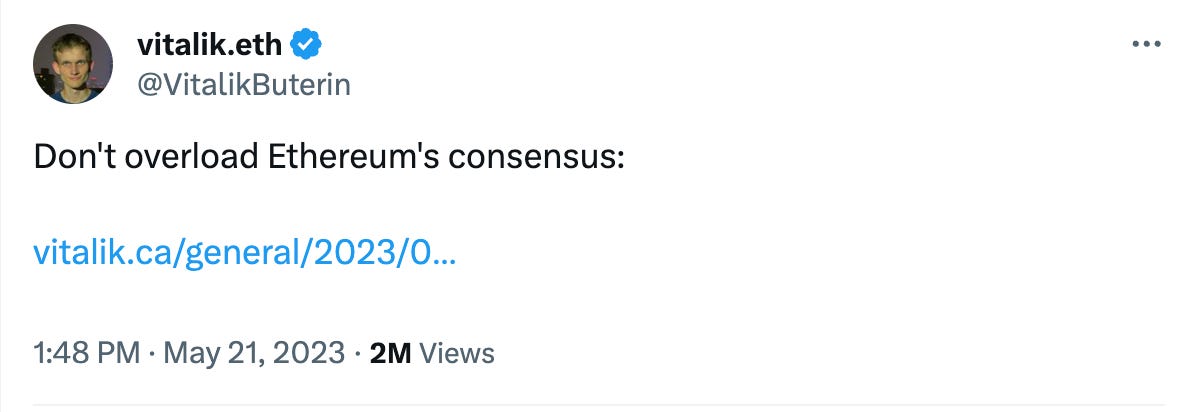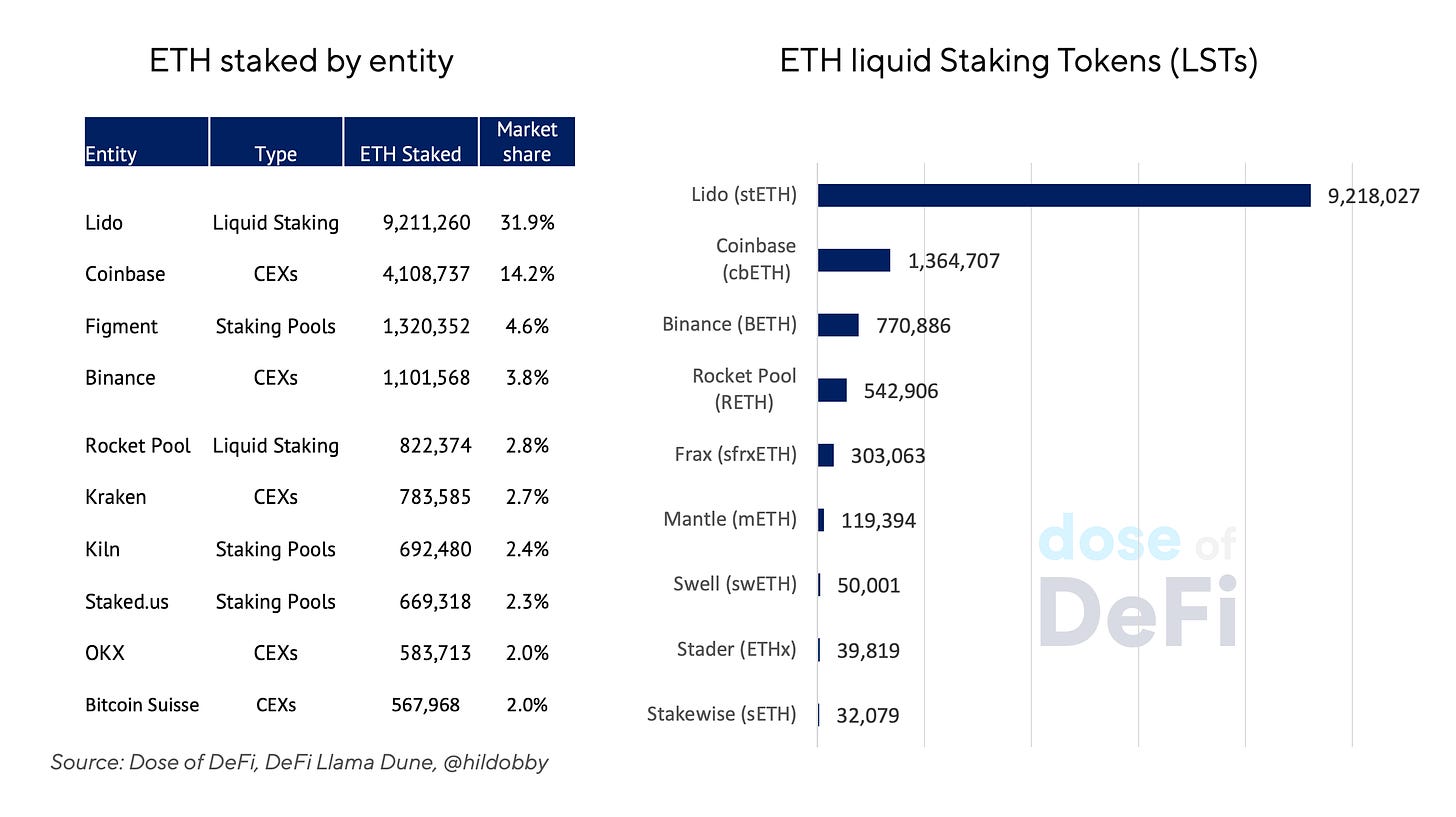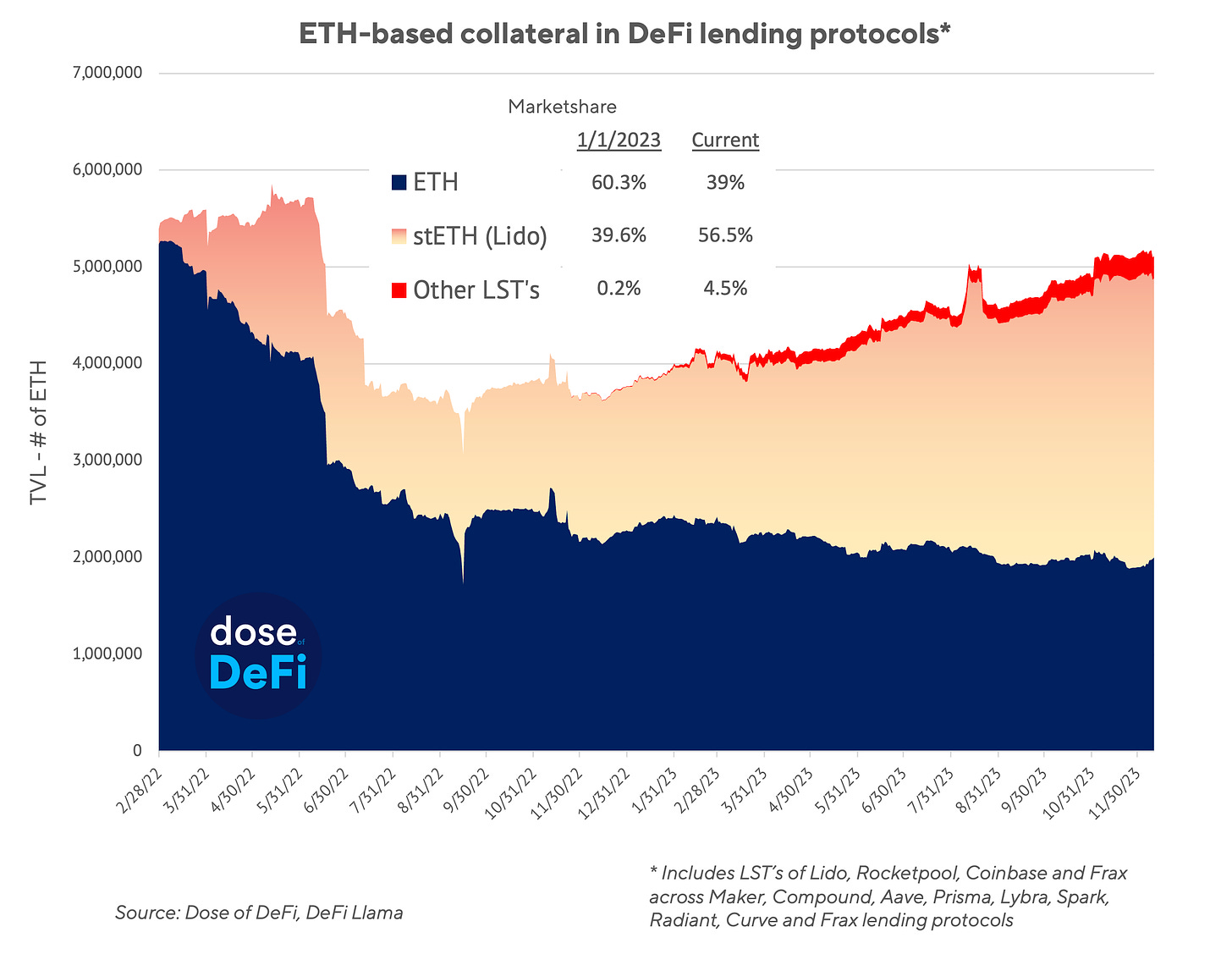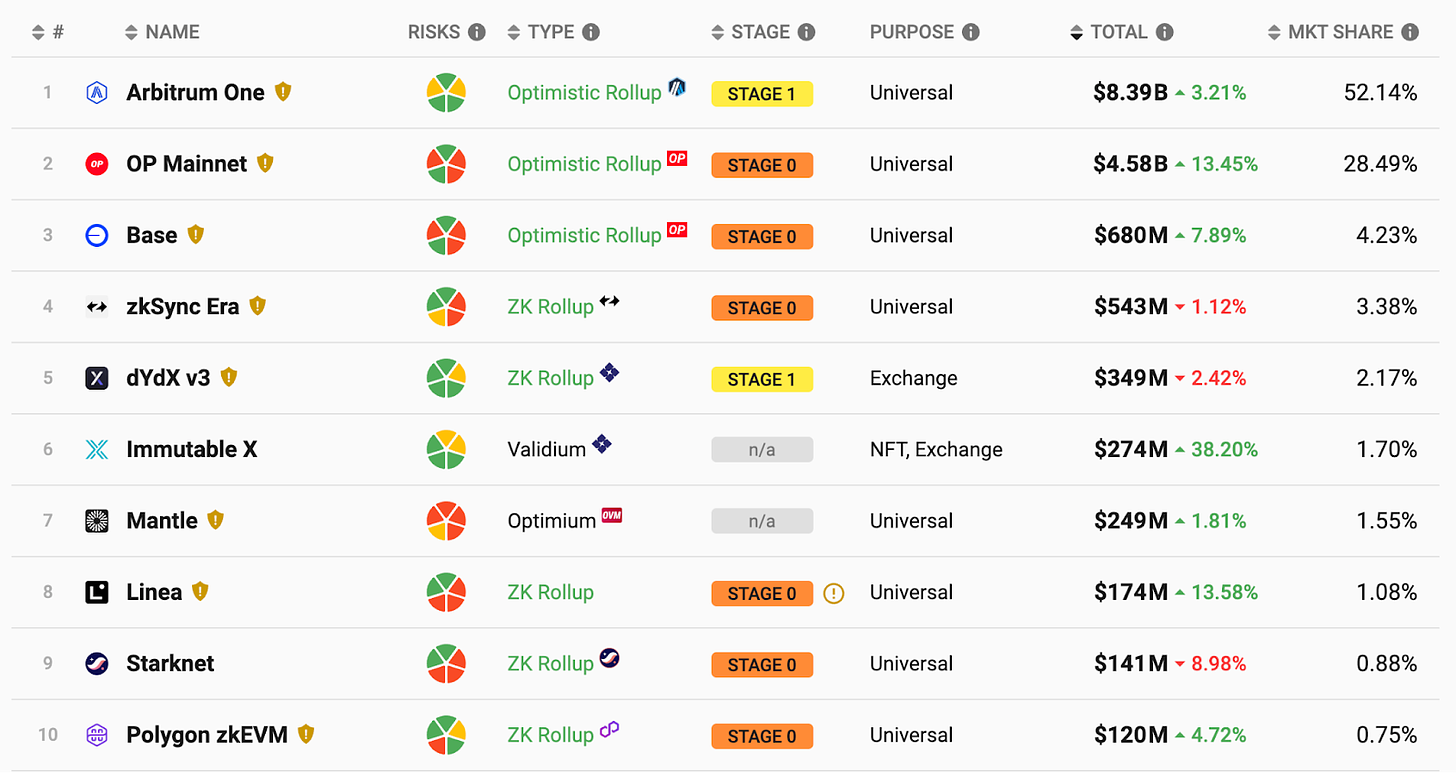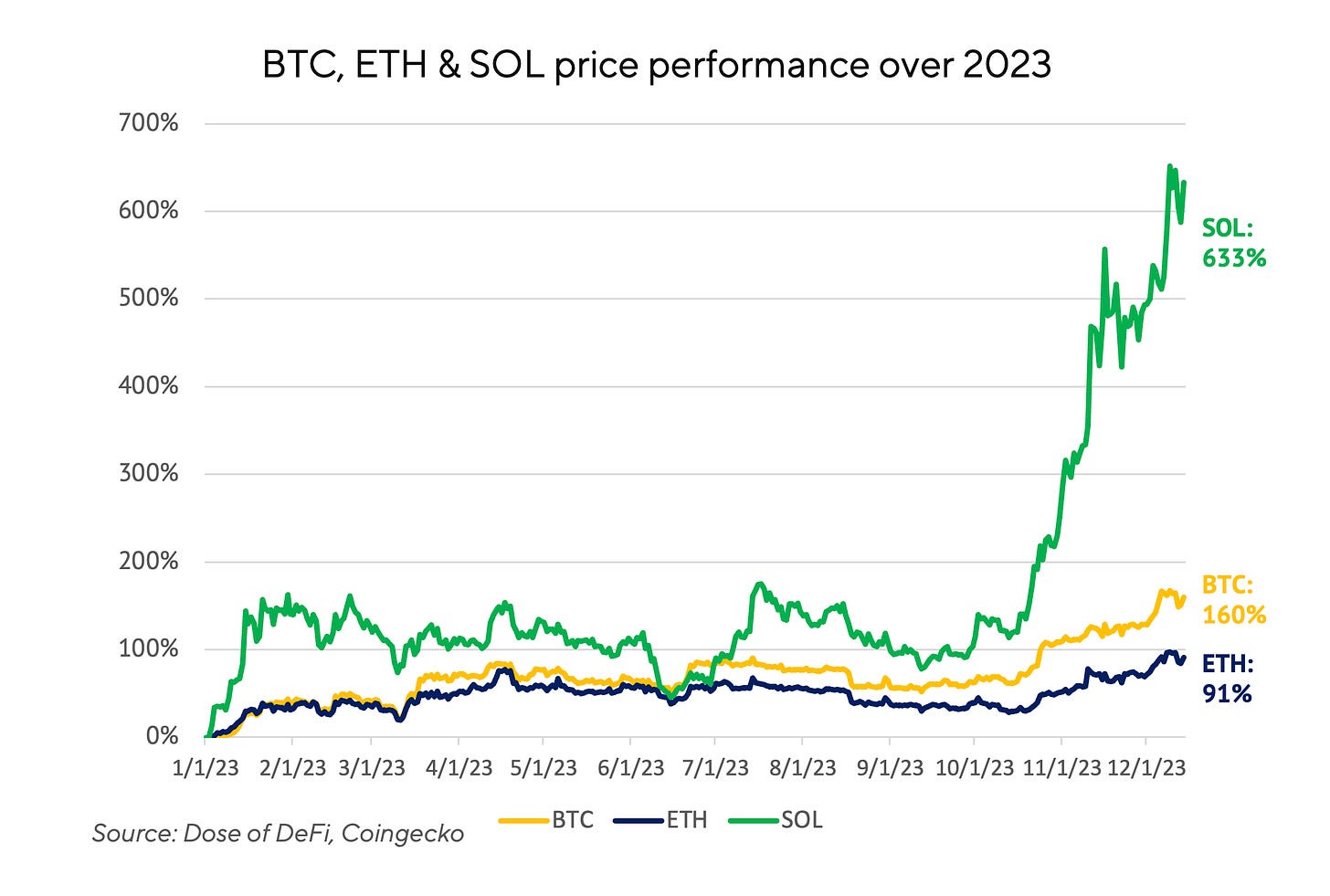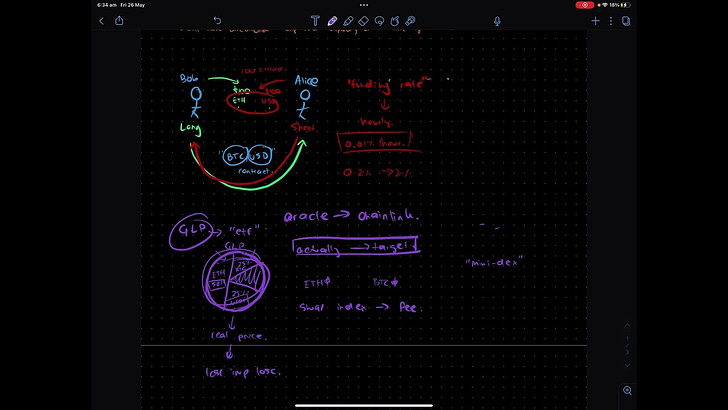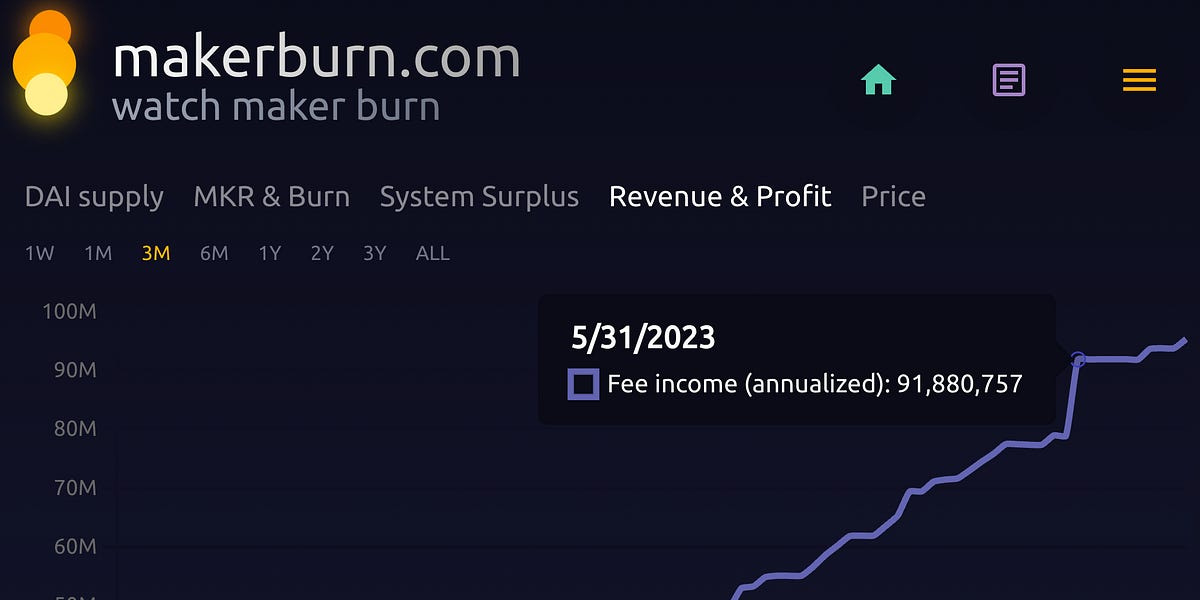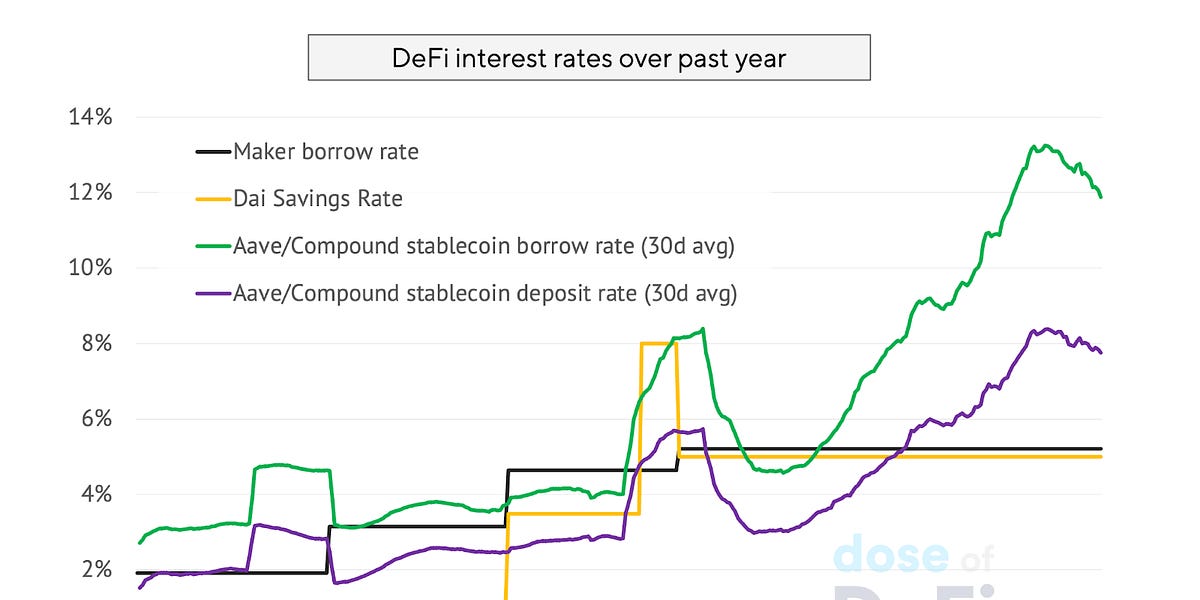[ad_1]
Hello! Welcome to another year-end look at the world of DeFi. As in 2020, 2021, and 2022, we’ve collated below the top memes of the year for 2023, along with five charts that help explain the year. It’s been a year without euphoria, yet enthusiasm emerged across several key areas. Narrative development is key to success in crypto and DeFi; the memes below are intended to highlight how parts of the industry have tried to build momentum around ideas, problems, or investment opportunities. The charts are snapshots of an industry that now has years of market cycles and competitive battles under its belt, but is still creating new market structures and primitives.
This issue of Dose of DeFi is brought to you by:
Oku makes DEX trading seamless across the top EVM chains. Try it now with 0% fees and advanced analytics. Website & Twitter
The first on-chain AMM Bancor launched in 2017. This was followed by Uniswap in 2018, and soon after, impermanent loss was coined to describe the risk of LPing in an AMM with sharp (or really any) price movements. Tim Roughgarden of Columbia and a16z crypto reframed the problem and rebranded impermanent loss to loss versus rebalancing (LVR). Eliminating impermanent loss seemed like an impossibility, but reducing LVR feels like a “challenging but well-defined problem”, in the words of Dan Robinson. New research also emerged this year from Max Resnick at the Special Mechanism Group that illustrated the CEX-DEX arbitrage, which some say is responsible for 85-90% of all MEV profits.
Minimizing LVR has now become a modus operandi for all DEX designers. Uniswap unveiled its v4, with its core concept of hooks giving LPs – or more accurately, new DEX designers – more tools to deal with LVR. This has not yet launched but its code is public. Ambient Finance has a similar concept but launched on-chain without the catchy hook descriptor. It has dynamic fees and hopes to reduce toxic flow. Sorella Labs has yet to release its Angstrom project, but it aims to use a gated liquidity layer built on Uni v4, with the ability to auction off the right to trade with LPs. This is similar to the design that CoW Swap has researched. All focus is now on reducing LVR and incentivizing searchers to work on behalf of LPs.
Learn more:
-
Ending LP’s losing game: Exploring the Loss-Versus-Rebalancing (LVR) Problem and its Solutions [0xKeyu/Fenbushi].
-
Will MEV mitigation destroy on-chain liquidity? [Dose of DeFi]
-
Uniswap v4 and Ambient Finance: Fresh hope for passive LPs [Dose of DeFi]
Ethereum is a complicated web of competing ideas and interests. There’s the Ethereum Foundation (EF) and the social layer, and then there’s application developers and users. Becoming aligned with all of these stakeholders has become a bit of a joke in 2023.
On one hand, you have other chains competing with each other to show how committed they are to Ethereum, like Polygon funding Ethereum core devs to show its zkevm is aligned with Ethereum. On the other hand, some people say they are “unaligned” with Ethereum because they disagree with the technical direction the protocol has taken. This group is critical of PBS and the MEV ruling class it has spurred. Some want faster block times, while others are frustrated with the solo-stakers obsession.
Explore further: Ethereum, to be, or not to be (aligned)? [Abdelhamid Bakhta/Starknet].
At a macro level, 2023 was defined by interest rate hikes at record pace. This wreaked havoc at regional banks and ultimately blew up Silicon Valley Bank and tarnished the sterling reputation of the DeFi’s Blue Knight (USDC). It was fitting that during the frantic weekend before the FDIC announced that SVB depositors would be made whole, USDC was considered the broader market price for an SVB recovery.
USDC is the most popular stablecoin in DeFi lending protocols, so its depegging could have created bad debt from mispriced collateral. On Compound, USDC was hardcoded to $1.00, so there was no risk of bad debt. Since then, Compound released v3, which only uses USDC as its borrowing stablecoin and does not as collateral. Aave, meanwhile, experienced the biggest scare during the USDC depeg. USDC did not drop below $0.85 and thus threaten the large mainnet markets, but Aave v3 with efficiency mode (E-Mode) saw some losses. Maker engulfed an extra $2 billion in USDC, leaving it even more dependent on the stablecoin. The event left such a sour taste that it’s pushing Dai to move away from the US dollar along a path laid out in the Endgame by Maker founder Rune Christensen. It has also onboarded other RWAs to significantly decrease the reliance on USDC.
Return: Damage control: DeFi lenders and the USDC depeg [Dose of DeFi]
When you first hear “intents” in a serious crypto conversation, you probably wonder why there needs to be a word for it. But then you see how the word has been used as a self-descriptor for a swath of new “intent-based protocols”. Could these exist without first the creation of the intents meme? Was CoW Swap an intent-based protocol when it launched before the meme was popularized? Put on your tin foil hats everyone.
In reality, the shift in user behavior from one where an execution path is defined to one where an end goal is signaled is subtle but important, and necessitates a word to describe the new design space. Looking ahead, application developers will build for an intents world, but there is still a lot of debate on how these intents will be solved. Front-ends and applications are where MEV is leaked, so they will need to come up with solutions to control their MEV supply chain.
Background: Intent-based architectures and their risks [Quintus Kilbourn & Georgios Konstantopoulos/Flashbots & Paradigm]
Restaking is one of those ideas that is so intuitive, you wonder how it was not thought of before. Put simply, a restaking protocol enables ETH validators to generate additional yield by running other computational tasks, such as an oracle. Sreeram Kannan theorized the idea that became Eigenlayer at the University of Washington in 2021, but it was this year that the idea truly broke through to the mainstream Ethereum conversation. Eigenlayer raised $50m in March. Its testnet launched in April and it went live on the mainnet in June, supporting stETH and rETH. Already, $400 million has been staked on EigenLayer, reaching the cap for stage 1 of the mainnet launch, even though there is no explicit yield promised.
Restaking changes Ethereum in two key ways. First, it offers a credible alternative to projects flirting with the app chain model of Cosmos. Cosmos’ appeal is the ability to easily bootstrap a small validator set that does more than just consensus, but actually runs logic on behalf of the application. dYdX has already shown the technical advantages in this approach with their v4. The rising popularity of coprocessors will also be a key use case for restaking.
Second, it introduces more leverage to Ethereum. This is what Vitalik is talking about when he wrote about not “overloading Ethereum’s consensus”. The same assets are being rehypothecated to secure more and more economic activity. Vitalik’s concern is how a downstream problem for a heavily restaked protocol might threaten Ethereum’s credible neutrality.
Restaking opens up the design space for trustless compute but it also introduces more layers of risk that must be monitored.
Dig deeper:
-
Restaking and shared security – the future of blockchain infrastructure [Felix Lutsch/Chorus One]
-
After Shapella, a new dawn for ETH yield products [Dose of DeFi]
-
Restaking Alignment with Vitalik, Sreeram, Tim Beiko, Justin Drake, Dankrad & Jessy [Bankless]
Lido has become perhaps the most important protocol in DeFi after it cornered the market on liquid staking tokens (LST’s) in 2022. There has been considerable anxiety on the power that Lido has. It has maintained a big lead on the LST market with over 75% market share, and a considerable lead in the overall ETH stake market hovering around ~30%. Many in the ETH community see keeping Lido below the 33% threshold as key to maintaining Ethereum’s decentralization, so it is notable that it did not significantly increase its market share, although the overall amount of ETH staked increased by 80% this year with ~23% of all ETH staked.
What are the downsides of Lido’s dominance? In their own words: “The most important concern is probably the validator/operator whitelist. If Lido continues to gain market share, there’s a risk that LDO holders would be able to effectively determine the majority of the Ethereum validator set. Governance could then shepherd Lido’s operators into working together to exploit multi-block MEV, execute profitable re-orgs, and/or censor certain transactions.” In February, Lido announced their v2, intended to decentralize the node operator list.
However, amidst these risks, Lido provides a buffer against KYC-ed exchanges dominating the Ethereum validator set (Coinbase is catching up with 15% share). We anticipate intense discussions about the platform’s impact in the coming years.
DeFi lending protocols did not unveil new protocol designs like their DEX brethren. Instead, they were focused on diversifying diversifying its collateral base. The most significant change of the year was the shift from ETH as the primary source of collateral to LSTs, specifically Lido’s stETH, which now accounts for a staggering 56% of collateral in major DeFi lending platforms. This explains Lido’s rise and reinforces its dominance, as its liquidity in DeFi simply makes it more useful than other LST’s.
Elsewhere in lending, Real World Assets (RWAs) increased dramatically, most notably at MakerDAO. Up until USDC’s depeg, almost 50% of Dai was backed by USDC. Maker onboarded almost $2.5bn in RWA collateral in the form of US Treasury bills, facilitated by BlockTower and Monetalis Clydesdale, which has decreased its reliance on centralized stablecoins to just under 9%. Maker also launched Spark, another lending protocol that forked Aave v3, which experienced rapid growth over the second half of the year.
In 2023, rollups emerged as a pivotal force in the industry. From the earlier discussions to the proliferation of diverse rollup solutions, the sector experienced a significant surge. Total value locked (TVL) has shown consistent growth, fostering healthy competition among ecosystems. Users now have the autonomy to opt for chains offering lower transaction costs, which are already below Ethereum’s rates (though still not reaching ideal levels). However, as the user base expands, transaction batching will reduce costs.
What interests us most is the diversity in the rollup offering (see chart). Optimistic rollups currently dominate. Arbitrum (after launching an airdrop in 2023) is leading in TVL, with Optimism following. However, the latter is growing horizontally – Coinbase’s Base chain is using Optimism Stack and is a part of its Superchain. Even though Vitalik predicts the eventual triumph of the ZK technology, ZK-based zkSync, Scroll and Starknet are yet to gain significant traction (and yet to launch tokens).
Stablecoins have endured the bear market quite well, with total value slowly decreasing from $140 billion at the peak of the bull market to $130 billion at present, significantly less than the 40% decline in the total crypto market cap. Despite this, USDT has maintained its leadership position, witnessing growth in both absolute value (from $65 billion to $90 billion) and in market share (from 48% to 70%). Meanwhile, USDC backed by Circle appeared to be making all the right moves, from closer collaboration with regulators, to expanding onto more chains and developing a top-tier bridge. Yet its market share declined from 31% to 19% in 2023. The USDC depeg is the most likely culprit for the decline. Tether’s USDT has firmly established itself within exchanges and is gaining momentum in South-East Asia and Latin America. Does USDT’s “up only” performance show us that the stablecoin market ultimately favors a winner-takes-all scenario?
Comparing prices at the end of the year is always an exercise in the arbitrary but it’s still fun none the less, especially comparing how the coins are doing at the end of 2023 compared to 2022. Who knows if this is the beginning of a sustained bull market, but it’s clearly put some animal spirits back into the industry.
The coins have all gone up, but not at the same pace. Solana is on an absolute tear, especially over the last two months, reminiscent of how ETH outperformed BTC in 2021. More recently, Solana is starting to see some uptick in DeFi activity. BTC, meanwhile, has reminded us to respect the orange coin. It has such a unique position in the public psyche. It seems some normies have reclaimed the narrative from the maximalists and there is now stuff actually being built on Bitcoin.
ETH, meanwhile, has lagged behind. It has long been the center of DeFi, so we are clearly biased towards it. Two problems hang over the ETH narrative: inability to scale and MEV extraction. These are only problems for Ethereum, because it’s the only blockchain with enough activity to create these problems in the first place. An army of researchers and developers are trying to solve these problems now. What’s clear is whether it’s a multichain world or a modular one, there will be not be one chain to win them all.
That’s it! Feedback appreciated. Just hit reply. Written in Nashville, where I’m fully embracing the holiday season. May I be one of the first to say, “Happy New Year!”
Dose of DeFi is written by Chris Powers, with help from Denis Suslov and Financial Content Lab. All content is for informational purposes and is not intended as investment advice.
[ad_2]
Source link

